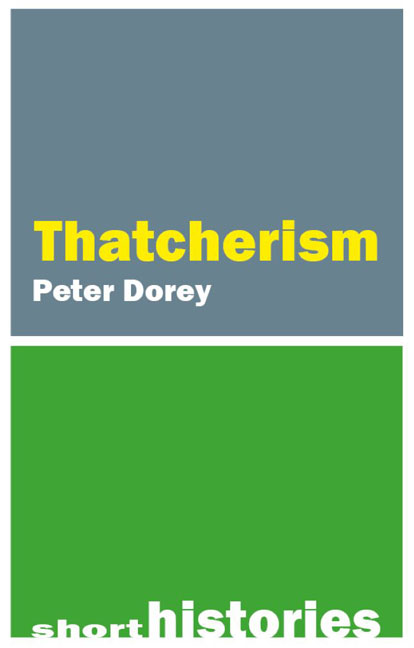Book contents
- Frontmatter
- Contents
- Preface
- 1 Why Margaret Thatcher Became Conservative Party Leader and Prime Minister
- 2 The Development of Thatcherism: Intellectual Origins and Ideological Framework
- 3 The Key Policies
- 4 Thatcher's Management and Domination of the Parliamentary Conservative Party
- 5 The Thatcherization of the Conservative Party Since 1990
- 6 The Contradictions and Consequences of Thatcherism
- Concluding Comments
- Chronology
- References
- Index
1 - Why Margaret Thatcher Became Conservative Party Leader and Prime Minister
Published online by Cambridge University Press: 23 January 2024
- Frontmatter
- Contents
- Preface
- 1 Why Margaret Thatcher Became Conservative Party Leader and Prime Minister
- 2 The Development of Thatcherism: Intellectual Origins and Ideological Framework
- 3 The Key Policies
- 4 Thatcher's Management and Domination of the Parliamentary Conservative Party
- 5 The Thatcherization of the Conservative Party Since 1990
- 6 The Contradictions and Consequences of Thatcherism
- Concluding Comments
- Chronology
- References
- Index
Summary
When Margaret Thatcher became Conservative leader in February 1975, she had not yet fully embraced the principles and policies which were subsequently developed into Thatcherism. However, she instinctively perceived that the path chosen by the postwar Conservative Party had been a mistake, and her experiences as a minister in Edward Heath’s 1970–74 cabinet reinforced her growing conviction – fully shared by Keith Joseph – that the Conservatives needed a change of ideological direction. At this stage, however, her instinctive ideas and philosophy were not fully formed, so that at the time of the Conservative leadership contest, Thatcher had only recently embarked upon her process of political reappraisal and search for a new mode of Conservatism.
It has been widely believed that in the 1975 Conservative leadership contest, many Conservative MPs voted for Thatcher primarily because they were determined to replace Heath, and most of the other leadership contenders were his allies or associates: “Electing Margaret had simply been the most effective way of getting rid of Ted” (Critchley & Halcrow 1998: 60; see also Riddell 1985: 10). However, although she undoubtedly attracted support from many Conservative MPs by virtue of not being Heath, this has been exaggerated as the main motive for voting for her, and therefore underestimated the extent to which Thatcher genuinely appealed to some Conservative MPs in her own right, either due to her apparent personal qualities or/and her nascent right-wing views. After all, if Conservative MPs had merely wanted a new leader whose most important characteristic was that they were “not Heath”, there were others in the second ballot, such as William Whitelaw and James Prior, who were associated with him ideologically, but were potentially more politically attractive. It therefore behoves us to examine more carefully, and with more nuance, how and why Thatcher was elected Conservative leader in early 1975. Three discrete factors need to be considered: the unavailability of other candidates representing the Conservative right; the manner in which Thatcher was already beginning to develop a distinct ideological stance and policy agenda, even though it did not yet warrant the soubriquet Thatcherism; the extent to which she had impressed some Conservative MPs with her parliamentary performance as a shadow Treasury minister since the previous year's election defeats.
- Type
- Chapter
- Information
- Thatcherism , pp. 1 - 22Publisher: Agenda PublishingPrint publication year: 2023



